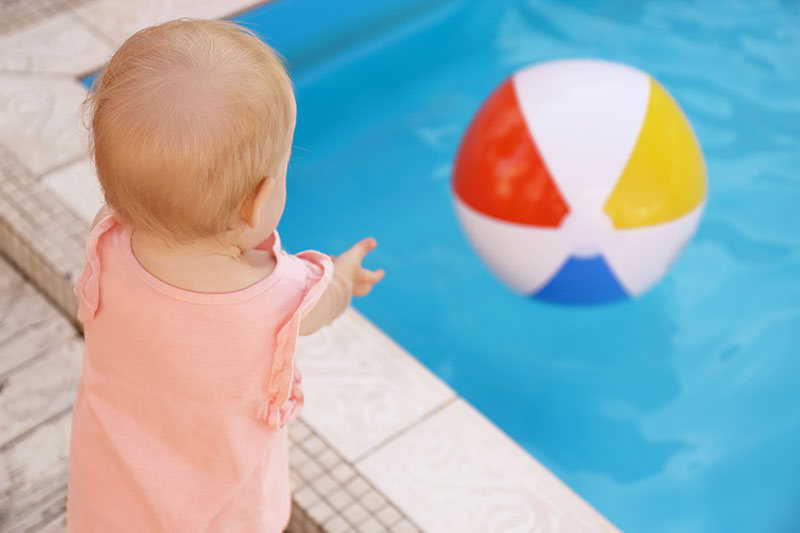
Take Extra Precautions to Avoid Drowning Accidents
Summer is just around the corner! Swimming and splashing around in the pool, lake or beach is a great way to keep cool in Houston’s summer heat. However, if precautions are not taken, a young child can drown quickly and silently. In observance of National Water Safety Month this May, Harris County Public Health (HCPH) reminds you to take extra precautions to prevent your children from drowning accidents.
The Centers for Disease Control and Prevention (CDC) reports that more children between the ages of 1-4 die from drowning than any other cause of death in the United States. For children ages 5-14, drowning is the second leading cause of unintentional injury death after motor vehicle crashes.
In 2022, 76 children between the ages of 8 months to 17 years drowned in Texas. Eleven of those drownings happened in Harris County. Among them, six drowning cases occurred in residential pools and bathtubs; five children died in natural bodies of water, such as a river, creek, pond or bayou. Statewide, 71% (54) of children drowning incidents in 2022 took place in home pools and bathtubs.
“Drowning accidents can be prevented,” said Scott Jeansonne, director of the Environmental Public Health (EPH) Division at HCPH. “We strongly encourage all families, especially parents and adult caregivers of small children to pay close attention to children any time they are around any bodies of water.”
“Most importantly, never leave a small child unattended in or near a pool or a bathtub, even if the water appears to be shallow,” Jeansonne added. “An accidental drowning can occur in a matter of seconds. It’s also critical to have a responsible adult who can swim around a pool or natural body of water to assist someone at risk of drowning.”
Who is at risk?
- Children who are 5 years old and younger are at greatest risk of drowning, followed by teens and young adults.
- Males are three times more likely to drown than females.
- The drowning death rate for African Americans and American Indians or Alaska Natives are disproportionately higher than that of White people.
- Certain medical conditions such as seizure disorders may also increase an individual’s risk of drowning.
Water-related injuries and drownings result in tremendous financial costs, which cannot compare to the cost of losing a life.
Where and how do children drown?
Most drowning injuries for children ages 0-4 years occur in the home. Children who drown in backyard swimming pools and bathtubs were left unattended for a 2-5 minute period, the time it takes to look away to answer the telephone. Even an older child with minimal swimming skills can be at risk by engaging in risk-taking behaviors.
Most drowning fatalities and drowning injuries occur on Saturdays and Sundays between the months of May and September.
What are some important water safety tips?
- Stay alert! Children move fast and disappear from sight in seconds.
- Actively watch young children by keeping them within arm’s reach. When you leave the water or pool, take your child with you.
- Never rely solely on the lifeguard to watch your child.
- Children should never play games of holding their breath underwater for long periods of time.
- Consider installing a safety barrier such as a fence at least 4 feet high with a self-closing and self-latching gate, a pool cover or a safety alarm system.
- Remove ladders from above-ground pools. Keep proper safety equipment nearby.
- When the pool is not in use, remove any toys in or nearby the pool since that may attract children.
- Enroll yourself and your child in swimming classes.
- Make sure your child is wearing a U.S. Coast Guard-approved life jacket for their weight and size.
- Learn basic CPR; keep rescue items and a phone close by in case of an emergency.
Remember…as you plan your summer activities, plan for safety first! For additional information, please visit Harris County Public Health's Water Safety web page at hcphtx.org/WaterSafety.
Source: Harris County Public Health








